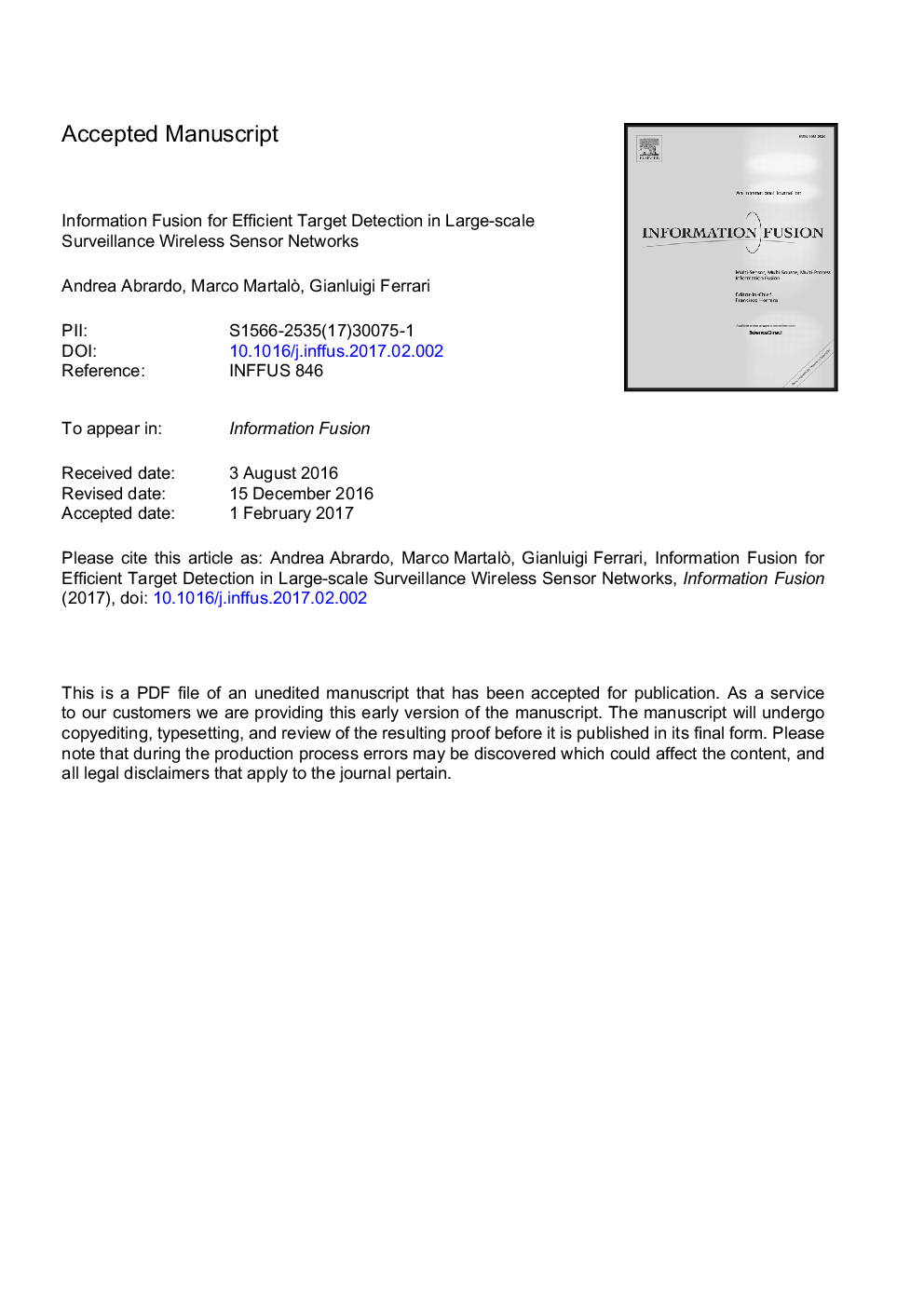| Article ID | Journal | Published Year | Pages | File Type |
|---|---|---|---|---|
| 4969174 | Information Fusion | 2017 | 39 Pages |
Abstract
In this paper, we consider a surveillance scenario, where nodes of a Wireless Sensor Network (WSN) cooperate to detect an event of interest, e.g., the presence of a mobile target in a monitored region. The considered scenario refers, for example, to ELectronic-signals INTelligence (ELINT), since detection is based on sensing the presence of anomalous electromagnetic signals in the monitored area. Leveraging previous results in the field of cognitive wireless networking, we derive proper decision and fusion strategies. We investigate both clustered (where no direct communication between sensors and the Communication and Control center, C2, is allowed and intermediate data fusion is performed at Cluster Heads, CHs) and unclustered (with direct communications between sensor nodes and the C2). System performance is analyzed in terms of False Alarm (FA)/Correct Detection (CD) probabilities and energy consumption, quantifying inherent tradeoffs between these performance indicators.
Related Topics
Physical Sciences and Engineering
Computer Science
Computer Vision and Pattern Recognition
Authors
Andrea Abrardo, Marco Martalò, Gianluigi Ferrari,
